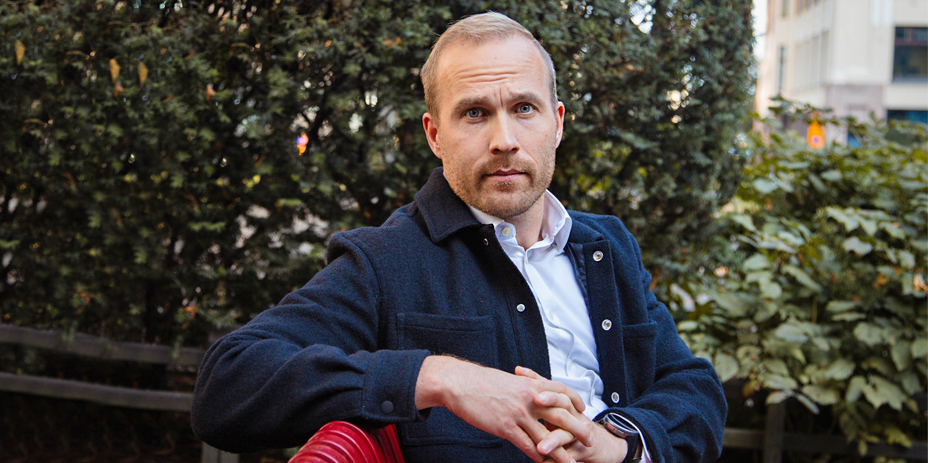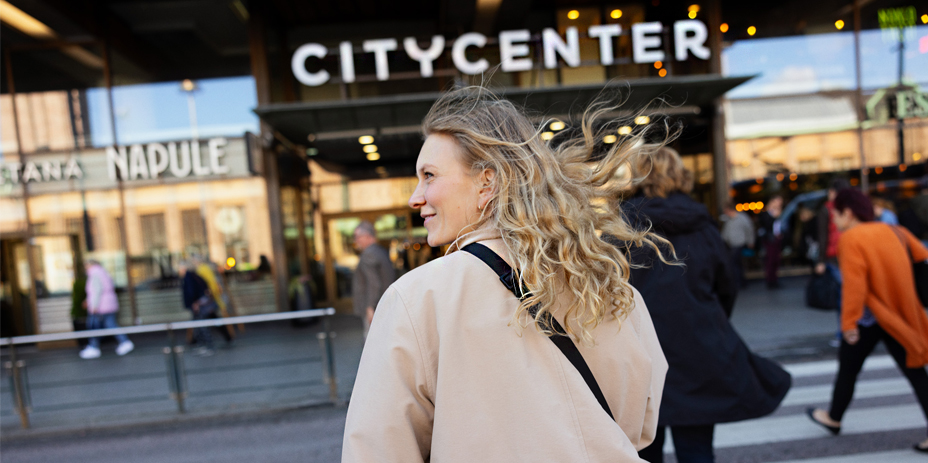
Psychologist Pekka Tölli: “An organisation characterised by a sense of presence is built on appreciative encounters”
Genuine presence is regarded as the most important resource and success factor of the knowledge work communities of the future. However, hybrid work and digitalisation are increasingly pulling people apart. How can an organisation with a strong sense of community and presence be built and managed?
According to Pekka Tölli, chief organisational psychologist at Mehiläinen and a former banker and McKinsey consultant, who has worked in the fields of business management and well-being at work for more than 15 years, there are currently two challenges to building a work community characterised by presence.
“The first is the need to please and the lack of commitment to the work community that have crept to working life – and the second is the general misconception that we work only for ourselves,” says Tölli.
People are not committed to the workplace, but to other people.
According to Tölli, remote work practices that are too loosely defined serve as a good example of the first point. When trying to meet everyone’s wishes regarding remote work, joint encounters become rarer and the sense of community erodes. Working together with others is often more fruitful in terms of both well-being and development.
According to Tölli, the second challenge concerns the erosion of healthy solidarity related to work.
“After all, part of the reason why work feels inspiring and motivating is the opportunity to help others succeed and be present for them. So we also go to work for others, not just to meet our own needs.”

Three steps towards an organisation characterised by presence
Tölli examines the construction of an organisation with genuine presence as a three-level process, where the main idea is the creation of mutual appreciation. The aim is to consider what kind of solutions can be used to increase encounters that foster commitment and a sense of appreciation at the level of the organisation, teams and individuals.
The process starts at the level of the individual, because according to Tölli, individuals bear the main responsibility for the creation of an organisation with genuine presence. At the individual level, the focus is on the attitudes and characteristics of the personnel. What skills do employees have in the area of presence and how is the supervisor present for the employees – what are the things they focus their attention on?
“When an employee delivers a report to the supervisor, it makes a huge difference whether the supervisor asks why they are only getting the report now or whether they look the employee in the eye and thank them sincerely,” explains Tölli.

The psychologist refers to research that shows that the direction of the supervisor’s gaze alone makes a difference.
“Studies show that employees that a supervisor focuses their attention on in a meeting, for example, participate more actively. Sitting next to someone at lunch or having a chat in the corridor alone is pretty important.”
Impact on the level of individual comes from positive feedback
According to Tölli, the most important management tool at the individual level is positive attention and feedback. These get their power from non-linearity – even a minor feedback can create a gigantic effect. What is essential is that the feedback is genuine, concrete and given immediately, not only in the performance appraisal.
Employees in whose direction a supervisor looks participate more actively than others.
Tölli emphasises that everyone has a need to be seen at work also as themselves – not just based on their performance. He encourages supervisors to be present in an appreciative manner and to show interest in the employee also outside their moments of success or failure. He recommends that the employee’s point of view is listened to carefully in connection with giving feedback and that the employee is offered the opportunity to think about a solution together.
“There must always be light at the end of the tunnel,” Tölli stresses.
Practices for encounters created at the team level
At the level of teams, Tölli encourages supervisors to consider how the work community approaches various encounter situations. How a colleague is greeted, what kind of meeting, break and recovery practices are preferred and how the need for help is communicated within the team.
“It makes a big difference whether you say good morning to everyone or invite everyone to lunch. If people realise that everyone is working for each other and dependent on each other, an atmosphere can be created where asking for advice is easy and joint brainstorming is inspiring.”

In addition to the creation of an open conversation culture and safe atmosphere, Tölli urges managers to survey what motivates their employees and what they need to feel valued. According to the psychologist, motivational factors are difficult to come to grips with remotely, so presence and sensitivity are needed for a supervisor to be able to sense how employees react to different situations. Someone may need verbal praise while another may prefer more responsibility. For some, public expressions of gratitude are embarrassing and for others, additional responsibility is a punishment.
According to Tölli, when supervisors get to know their employees, managing the team that is present becomes similar to coaching a sports team. The team can boldly try out different playing positions and challenge employees to test different strengths.
“A good leader helps employees understand themselves and feel confident about their competence. On the other hand, employees are at their most motivated when the challenges presented by work are in balance with their sense of being in control.”
At the organisational level, people are brought together
As examples concerning an organisation as a whole, Tölli raises the company’s location, premises, remote work methods and the norms for shared encounters.
“An appropriate location and facilities designed to meet the needs of the staff will help bring people together. Space solutions and day-to-day practices guide how presence is transformed into interaction that produces well-being and innovation,” Tölli sums up.
Further development of ideas is the strongest driving force for the company.
According to the psychologist, well-being and new ideas are more likely to emerge at work when people also get to exchange ideas outside intensive Teams meetings – spontaneous encounters across team boundaries generate insights that would not otherwise emerge.
Tölli reminds that the team that is present also needs time and space for recovery.
“Genuine presence and continuous interaction cause strain in the long run. The office must have quiet spaces that allow for solitude and quiet work. Clear structures also leave more energy for interaction and innovative brainstorming.”

Growth is built one encounter at a time
Although an organisation characterised by presence is theoretically built on three different levels, in practice it is shaped one encounter at a time, according to Tölli. Every positive, appreciative encounter strengthens the desire to work together and perform better in work tasks. Tölli says that presence and mutual appreciation gradually become the glue that binds the whole team together.
“People are not committed to the workplace, but to other people. The reason for staying at work is often a supportive manager or nice colleagues. Likewise, many people leave if they feel that their work is not valued or managed fairly.”
Pekka Tölli is a chief organisational psychologist who is passionate about appreciative encounters between people. Tölli previously worked as a banker and as a McKinsey consultant, after which he went on to study psychology. His years in the business world sparked a desire to help managers, management teams and work communities thrive and increase the meaningfulness of work. According to Tölli, the most important things in working life are appreciative presence and the sense of being seen – they create a basis for the well-being and success of individuals and the work community as a whole.
Real estate investment company Sponda wants to shake up working life by highlighting the importance of the humankind’s most important value, presence. What can we achieve as individuals, communities and society if we are truly present in what we do? What happens if we lose our most important asset once and for all? In its communications, Sponda also shares concrete instructions for practising presence and reflective interaction, building an organisation characterised by a sense of presence, and designing premises that create a sense of community. Sign up for our newsletter to receive all content directly to your inbox. You can also find the publications on sponda.fi or on social media using the hashtags # lasnaolo and #FlipForPresence.
